- Home
- Laurie R. King
The Mary Russell Companion
The Mary Russell Companion Read online
The Mary Russell Companion
Laurie R. King
Copyright © 2014
Introduction to The Mary Russell Companion
by Laurie R. King
Mary Russell is what Sherlock Holmes might look like if that great Victorian detective were A) young; B) female; C) of the Twentieth century; and D) interested in theology. If the mind is like an engine, free of all considerations of gender, race, and nurture, then the Russell & Holmes stories are about two people whose basic mental mechanism is identical. What each does with that machine, however—ah, that’s where the interest lies.
According to Arthur Conan Doyle, following a long life in private practice as a consulting detective—a period called simply “Baker Street”, after the London rooms rented from Mrs Hudson—Sherlock Holmes retired to the Sussex Downs. The Conan Doyle stories recount some adventures during the years that followed, but they end on the eve of the Great War, when Holmes foils a German plot in the summer of 1914 (His Last Bow).
Thus, the Conan Doyle stories make no mention of Mary Russell. Nonetheless, in Russell’s Memoirs, another history—an alternative to that of Conan Doyle, who has the Great Detective fade into the sepia stains of history along with the rest of his Victorian Era—begins in the spring of 1915, when Sherlock Holmes is at long last confronted by a young person with the potential to become his student.
I came to know Mary Russell in the late 1980s, when either A) I sat down and wrote the words, “I was fifteen when I first met Sherlock Holmes, fifteen years old with my nose in a book as I walked the Sussex Downs, and nearly stepped on him” or B) I received a mysterious trunk filled with odds, ends, and… manuscripts. Since that time, I have either A) continued to invent and publish a series of books about Russell, Holmes, and their colleagues, or B) continued to transcribe Miss Russell’s difficult handwriting to publish the books.
“A large and much-abused, old-fashioned metal traveling trunk…”
This question of my relationship with Mary Russell—am I the author who invented her, or the agent who represents her?—is one that has followed me all my career. It forms the basis of Miss Russell’s communications with me, included here with the documents “My Story” and “A Case in Correspondence”, and occupies the Companion’s chapter called “Miss Russell’s Game”, but ultimately, the choice is yours: believer, or skeptic?
The Game continues.
—Laurie R. King
Thanks & Acknowledgments
It takes a community to shape a Companion. Miss Russell and Laurie R. King owe their special thanks to:
Alice Wright, for her long friendship and her closely detailed notes concerning the history of Mary Russell, the sequence of stories, and the physical details of Russell’s world. She and Merrily Taylor are responsible for a number of the footnotes to the Beekeeper’s Apprentice section.
Leslie S. Klinger, who so gleefully agreed to turn his prodigious annotating skills onto the LRK Kanon.
Team LRK: Robert Difley, Zoë Elkaim, and Nathan King, who did all the hard work, and to Vicki Van Valkenburgh, Erin Bright, and all the other Friends of Russell out there.
Jean Lukens, whose paintings grace the Companion’s cover and the beginning of The Annotated Beekeeper’s Apprentice.
Veronica Adrover, Shirley A Bomgaars (Creative Office Guru graphic design), Jenny Parks (scientific illustrator, jennyparks.com), and Debra C. Thomas, for their “Parrot King” illustrations; Rori Shapiro and Sara McClelland for their “Illuminated MyStory” pieces; Tamra Arnold and Kimberly Pollard, for their vivid moments in Russell’s life; and Jarl Meagher, for the photograph of the house where Conan Doyle stayed.
Marjorie Tucker and John Bychowski, Russell’s puzzling friends, for their word play.
Kathryn Caras and Mary Rawlinson, whose enthusiasm for the Sayings of Mary Russell may some day come to fruition in a separate volume, but whose work on Russellisms contributed much to the current Companion.
Heifer International, whose gorgeous booklet “Practical Handbook of Bee Culture” by Sherlock Holmes was a part of the fund-raising campaign for Language of Bees.
And particular thanks to Random House/Bantam Books and Picador/St Martins Press, for their generous permissions and their ongoing support and enthusiasm.
The Mary Russell Companion
Table of Contents
(Click on any blue text in this ebook to link to subject)
Introduction & Acknowledgments, by Laurie R. King
One: On Mary Russell
Miss Russell’s Game
About Mary Russell
Where’d she go? Maps of the Russell travels
A Woman of the Twenties: Mary Russell, Feminist?
On Matters Unspoken
Russell’s Homes
Interview I: Mary Russell interviews Laurie R. King
Two: The Russell Memoirs
A Russell Chronology
Russell’s Fellow Actors: the characters of the Russell Memoirs
—Known to Arthur Conan Doyle
—First seen in the Memoirs
—Known to the outside world
The Memoirs
—The Beekeeper’s Apprentice: The Annotated Beekeeper
—Monstrous Regiment of Women
—A Letter of Mary
—The Moor
—O Jerusalem
—Justice Hall
—The Game
—Locked Rooms
—The Language of Bees
—God of the Hive
—“Beekeeping for Beginners”
—Pirate King
—Garment of Shadows
Interview II: LRK interviews Mary Russell
Three: The Mystery of the Memoirs
Laurie R. King: Literary agent?
Mary Russell: “My Story”
Mary Russell: “A Case in Correspondence” (The documents in the case)
Mary Russell: “A Case in Correspondence” (The transcripts)
Interview III: a Leslie Klinger-Mary Russell “Twinterview” in 140 characters
Four: Brief Interludes
A Venomous Death
Birth of a Green Man
Parrot King
Interview IV: A Twentieth Anniversary conversation
Five: Addenda
Recipes (from Mrs Hudson)
William King and the Dalai Lama: the papers of WH King
Mary Russell on God
Six: The Russell Community
Laurie R. King
Russell Blogs?
Twitter & Twitter parties
Letters of Mary
Virtual Book Club
Meet-ups
Fun & Games with Russell & Holmes
Art in the Blood: A Beekeeper’s Gallery
Note: “Russellisms”—pithy or memorable turns of phrase taken from the Memoirs—are the equivalent of the Holmes world’s collection of “Sherlockisms”. These epigrams are treasured by Russell’s readers, printed onto t-shirts and coffee mugs, used in informal contests of wit, and are found in this Companion, either scattered throughout the chapters or in groups at the beginning of each book page.
Further note: Many title references are given in short form here, omitting “The Adventure of” or “The Case of the”, and in parenthetical references, short stories are put into italics rather than quotes
One:
On Mary Russell
Russell on Holmes:
I hoped to God this man actually was a friend. If he was my enemy I was in grave trouble. (Garment of Shadows)
*
Although it may not have been a union of conventional bliss, it was never dull. (Monstrous Regiment)
Holmes on Russell:
Why did it never
occur before to me to have a vigorous young assistant to do what the Americans call my “dirty work”? (O Jerusalem)
*
He generally was aware of her presence, that sturdy physicality wrapped around a magnificent brain and the stoutest of hearts. . . this incomparable hard diamond of a woman. . . . (Locked Rooms)
Miss Russell’s Game
The world of Sherlock Holmes—the Conan Doyle world, that is, one in which the detective has yet to meet Miss Russell—is based upon what is called “the Game”, that deadly serious, tongue-firmly-in-cheek proclamation that The Great Detective was (indeed, is) a living man; that Dr Watson wrote the stories; and that Sir Arthur Conan Doyle was Watson’s literary agent, whose presence permitted the residents of 221b Baker Street to go about their business without constant interruptions from the adoring public. Any conundrums held in the stories, be they chronological oddities or factual conflicts, stem either from our inadequate understanding, or are flaws introduced by the Literary Agent.
Sir Arthur Conan Doyle
Sir Arthur, not being by nature an ironist, barely touches on the possibilities inherent in the Game. In “The Greek Interpreter”, Mycroft Holmes does say to Watson, “I hear of Sherlock everywhere since you became his chronicler,” but that is about as far as the Canon takes matters.
Metafiction is a game of fiction-within-fiction, sometimes ironic, other times playful. It is self-referential, leading back into itself, and carries with it the danger of nudging the reader out of the “vivid dream” of the story at hand.
Metafiction is an ongoing theme within the Russell Memoirs. For example, in (aptly enough) The Game, Russell is shown an old birth certificate from Ferozepore, on which is recorded a vaguely familiar name:
“I’m sorry,” I began, and then I paused, my mind catching at last on a faint sense of familiarity: Kimball. And O’Hara. Add to that a town that could only be in India…. No; oh, no—the book was just a children’s adventure tale. “I’m sorry,” I repeated, only where before it had connoted apology, this time it was tinged with outrage. “This doesn’t have anything to do with Kim, does it? The Kipling book?”
“You’ve read it?” Mycroft asked.
“Of course I’ve read it.”
“Good, that saves some explaining. I believe this to be his amulet case.”
“He’s real, then? Kipling’s boy?”
“As real as I am,” said Sherlock Holmes.
The Russian-dolls aspect of the books is there from the beginning, with LRK’s introduction to The Beekeeper’s Apprentice, in which she describes receiving a trunk full of manuscripts and other odds and ends—which is then followed by Mary Russell’s own introduction concerning the book. The next three books continue the theme, with notes by King expressing her own befuddlement about the stories (real, or not? And why sent to me, she wonders?) that are later followed up by two explanatory stories that give details of how King came to have the memoirs (“My Story” and “A Case in Correspondence”, both in this Companion.)
The mirror world of Russell’s reality pops in and out of the books. She mentions Conan Doyle, ragging Holmes about the fairies in his garden shortly after Sir Arthur’s 1920 Strand article about the Cottingley Fairies exposed his gullibility to the world—an article that would surely have driven the world’s proponent of rationality around the bend.
Cottingley Fairies
Similarly, in Pirate King, Russell is startled at an overlap of fiction and reality (Which being which, the reader wonders?) “…when my husband’s name appeared on the flickering screen: Buster Keaton in Sherlock Jr.” Later, she reflects on the oddity of being married to a man whom the world considers a character in a book, and admits, “I occasionally feel myself going translucent and fictional.”
The Russell community, it should be noted, has embraced the conundrum with open arms, and never fails to place Russell squarely in the world of nonfiction.
About Mary Russell
(Although the sections in the Mary Russell Companion that deal with specific books generally take care to avoid spoilers, this section does have them. Readers unfamiliar with some of the books might wish to skip ahead.)
A Biography of Mary Russell
There is no one place where Miss Russell recounts her entire autobiography. Instead, she drops bits of personal history throughout the Memoirs. Her parents were Judith Klein Russell, an English-born Jewish woman, and Charles David Russell, a Boston Brahmin (gentile) who went to California when young and established his home there. Judith and Charles met in London’s British Museum, and married in 1896: both families seem to have strongly disapproved.
Judith, the granddaughter of a rabbi, raised her children (Mary, born January 2, 1900 and Levi, 1905) in her faith, teaching them Hebrew and Rabbinical wisdom from a young age.
The family lived in London and in San Francisco throughout Mary Russell’s childhood, being in California during the great 1906 earthquake and fire (although Russell’s young mind shies from recalling those events). They were again in San Francisco when the Great War began in August 1914, and Charles Russell enlisted, slated to join Army Intelligence. Before leaving in October—Charles for the army and Judith and the children for Boston—the Russell family took a last drive to the family Lodge south of the city. On the way, in an incident that later turned out to be criminal, their car went off the cliffs into the Pacific Ocean. Judith, Charles, and Levi were killed, Mary was thrown out, leaving her orphaned, badly injured, and consumed with guilt over having not only survived, but knowing that she had contributed to the accident.
When she recovered enough to travel, around her fifteenth birthday, young Russell demanded to return to wartime England, to her mother’s beloved farm on the Sussex Downs. There she lived with her mother’s younger sister, a woman she detested but whose legal guardianship was necessary because of her youth.
It was on those Downs, three months after her fifteenth birthday, that Mary Russell encountered Sherlock Holmes. Distracted by the Virgil she was reading, she came near to tripping over him, observed the paint on his fingers and on nearby honeybees, deduced what his purpose is, and told him what she noticed. She then turned to leave him to his task.
Fortunately, he did not permit it.
Somehow, this lifelong misanthrope recognized the potential in a young, bespectacled, English-American girl with long strawberry-blond plaits, dressed in her father’s outdated suit. He took young Russell as his apprentice.
Russell’s skills
As might be expected of someone who is a match for Sherlock Holmes, Russell’s skills, both natural and learned, are formidable.
* Deductive skills: Russell notices what others do not, and puts facts together more quickly. From their first meeting, when the fifteen year-old sees paint on bees and instantly knows that this eccentric older man is looking to replenish his hives, not only do we see that this is a Holmes in the making, but Holmes himself sees it. Realization is confirmed later that day, when young Mary drinks his tea and recites the details of his life, from a recent spy case to his rocky relationship with his family.
* A gift for throwing: One of her more useful natural abilities is that of a wickedly accurate throwing arm. Whether it is the knife she carries in her boot-top or darts in a public house, her hand (the left one) hits what it aims at.
Throwing knives
* Languages: Russell’s other natural gift is that of languages. Her modern tongues include French, German, Italian, Spanish, and modern Hebrew; classical languages include Hebrew, Latin, Greek, and Arabic; she learns a degree of Hindi, Japanese, and Romany, and can decipher hieroglyphics and Coptic.
* Martial arts. Under Holmes’ direction, Russell enrolls in an Oxford school, or dojo. The Conan Doyle stories refer to Holmes’ expertise in “baritsu,” which was probably a version of W. W. Barton-Wright’s “Bartitsu” (Barton/jujitsu), introduced to England in 1899. There she learns self-defense, yes, but the lessons are also a means of taking control of her growing l
imbs (she is very tall for a woman of her era, just an inch short of six feet). One imagines that some of her physical clumsiness when young was a result of her injuries from the 1914 accident, which left her with many scars and which, one assumes, went untreated by physical therapies.
Bartitsu
* Academics: Russell enters an unnamed Oxford college in the war year of 1917, reading (i.e., majoring in) Theology and Chemistry. The latter subject tends to disappear as the Memoirs progress, but theological speculation forms a common thread throughout her adventures. Her particular area of interest (which, it is worth noting, she shares with her literary editor Laurie King) lies in feminine aspects of the Divine, with a concentration on the Hebrew Bible (or Old Testament).
* Skilled though she is in many areas, there are some true failures in her life. For one, she seems to be an abysmal cook, incapable of boiling water without scorching the pan (One comes to suspect that, taking into account her background in chemistry, Russell’s chronic inability to translate laboratory techniques into the kitchen is to some extent deliberate: women of her era tended to be urged toward the stove rather than the Bunsen burner, and it would have been simpler to assert incompetence than to proclaim a dislike.) She also has a poor ear for music, a source of conflict with her music-loving husband. However, when a case demands it, she is able to reproduce a simple tune on a tin whistle.
* Perhaps supporting the theory that her inabilities are chosen rather than thrust upon her, Russell is most competent behind the wheel, and (rather as Watson carried the revolver when their partnership demanded) is generally the one to drive a motorcar when the partnership needs to be somewhere fast. Holmes is capable of driving—at least, he had recently posed as a “motor expert” (His Last Bow)—but Russell’s reaction times and willingness to race back roads, while disconcerting to her more conservative partner, have yet to bring her to grief.

 O Jerusalem
O Jerusalem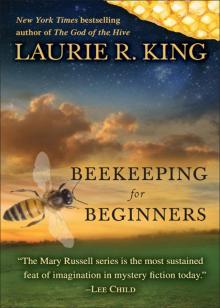 Beekeeping for Beginners
Beekeeping for Beginners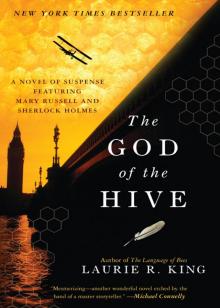 The God of the Hive
The God of the Hive The Language of Bees
The Language of Bees Night Work
Night Work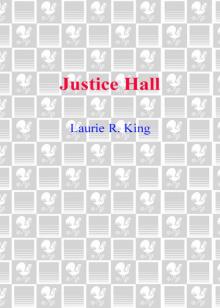 Justice Hall
Justice Hall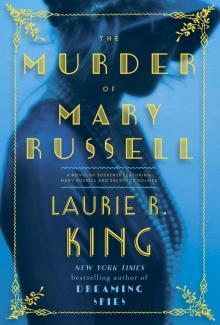 The Murder of Mary Russell
The Murder of Mary Russell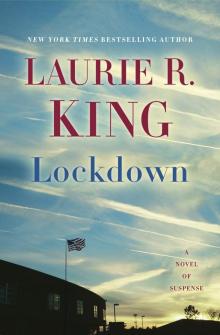 Lockdown
Lockdown To Play the Fool
To Play the Fool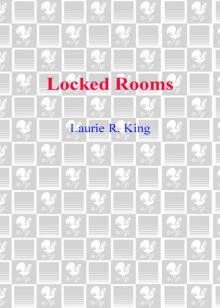 Locked Rooms
Locked Rooms Island of the Mad
Island of the Mad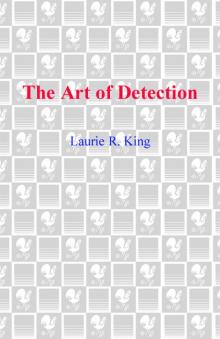 The Art of Detection
The Art of Detection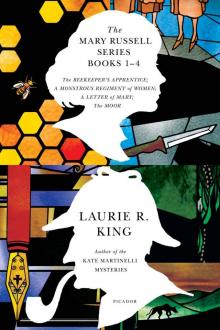 The Mary Russell Series Books 1-4
The Mary Russell Series Books 1-4 The Beekeeper's Apprentice
The Beekeeper's Apprentice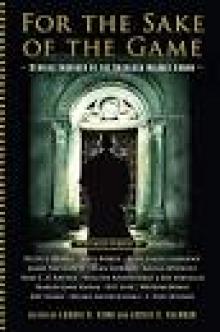 For the Sake of the Game
For the Sake of the Game A Darker Place
A Darker Place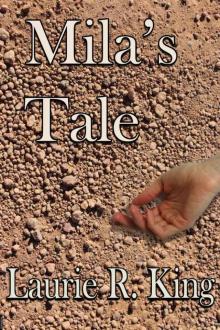 Mila's Tale
Mila's Tale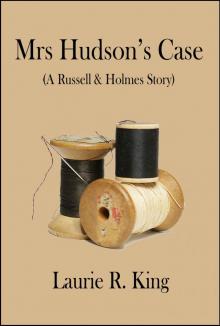 Mrs Hudson's Case
Mrs Hudson's Case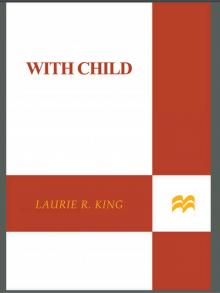 With Child
With Child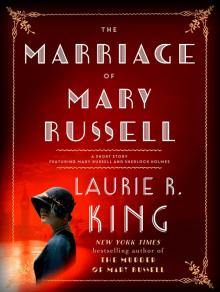 The Marriage of Mary Russell
The Marriage of Mary Russell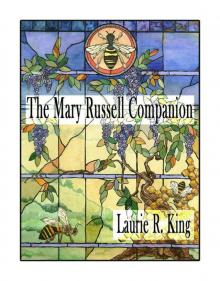 The Mary Russell Companion
The Mary Russell Companion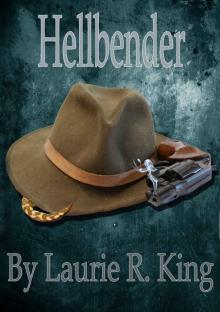 Hellbender
Hellbender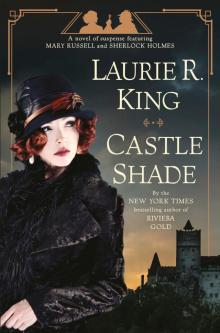 Castle Shade
Castle Shade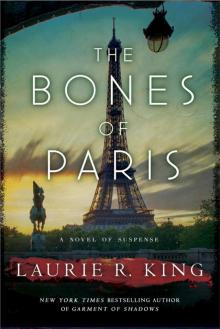 The Bones of Paris
The Bones of Paris Riviera Gold
Riviera Gold A Grave Talent
A Grave Talent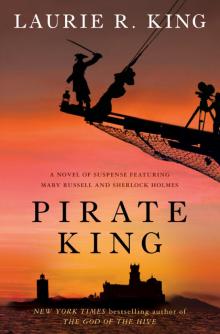 Pirate King
Pirate King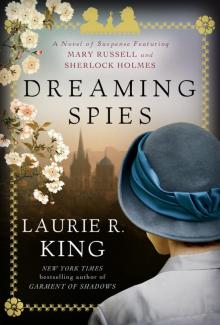 Dreaming Spies
Dreaming Spies Folly
Folly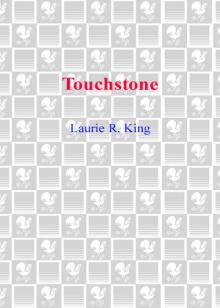 Touchstone
Touchstone The Game
The Game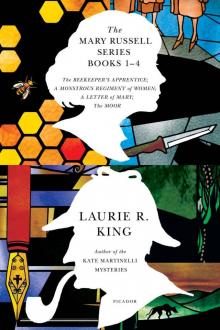 The Mary Russell Series Books 1-4: The Beekeeper's Apprentice; A Monstrous Regiment of Women; A Letter of Mary; The Moor
The Mary Russell Series Books 1-4: The Beekeeper's Apprentice; A Monstrous Regiment of Women; A Letter of Mary; The Moor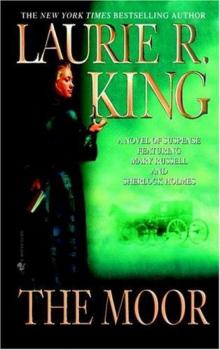 The Moor mr-4
The Moor mr-4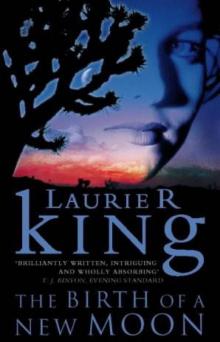 The Birth of a new moon
The Birth of a new moon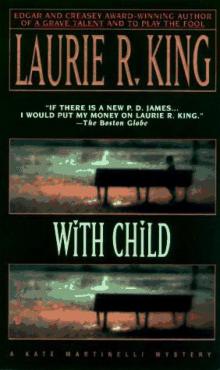 With Child km-3
With Child km-3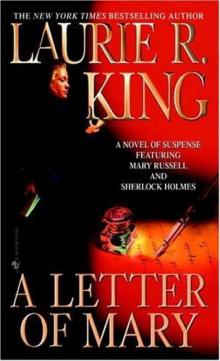 A Letter of Mary mr-3
A Letter of Mary mr-3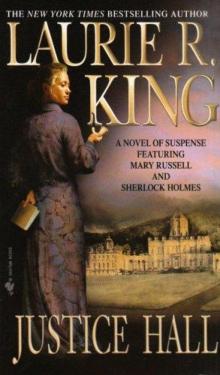 Justice Hall mr-6
Justice Hall mr-6 Pirate King: A novel of suspense featuring Mary Russell and Sherlock Holmes
Pirate King: A novel of suspense featuring Mary Russell and Sherlock Holmes Pirate King: A novel of suspense featuring Mary Russell and Sherlock Holmes mr-11
Pirate King: A novel of suspense featuring Mary Russell and Sherlock Holmes mr-11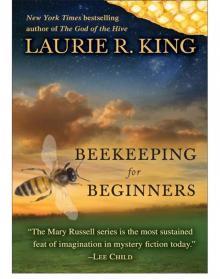 Beekeeping for Beginners (Short Story)
Beekeeping for Beginners (Short Story)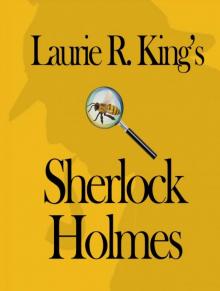 Laurie R. King's Sherlock Holmes
Laurie R. King's Sherlock Holmes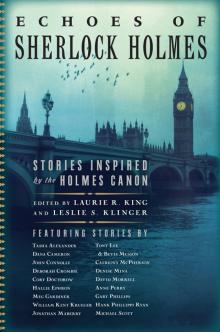 Echoes of Sherlock Holmes
Echoes of Sherlock Holmes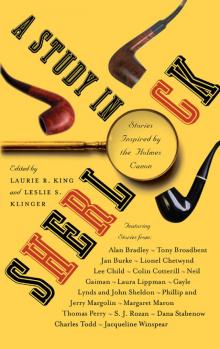 A Study in Sherlock
A Study in Sherlock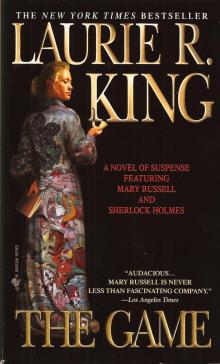 The Game mr-7
The Game mr-7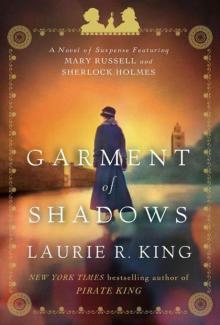 Garment of Shadows: A Novel of Suspense Featuring Mary Russell and Sherlock Holmes
Garment of Shadows: A Novel of Suspense Featuring Mary Russell and Sherlock Holmes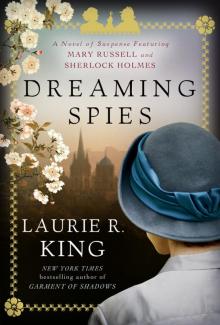 Dreaming Spies: A novel of suspense featuring Mary Russell and Sherlock Holmes
Dreaming Spies: A novel of suspense featuring Mary Russell and Sherlock Holmes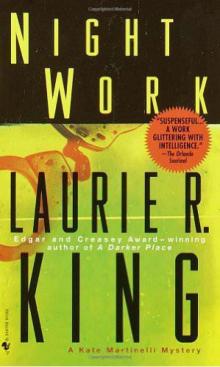 Night Work km-4
Night Work km-4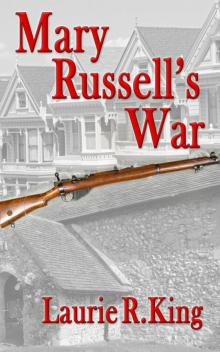 Mary Russell's War
Mary Russell's War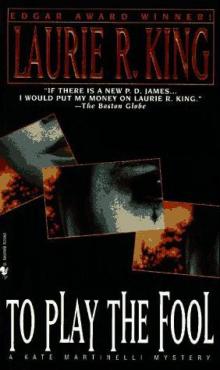 To Play the Fool km-2
To Play the Fool km-2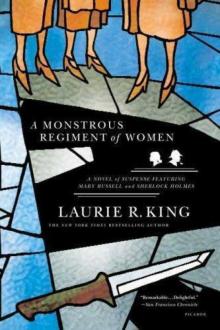 A Monstrous Regiment of Women mr-2
A Monstrous Regiment of Women mr-2 O Jerusalem mr-5
O Jerusalem mr-5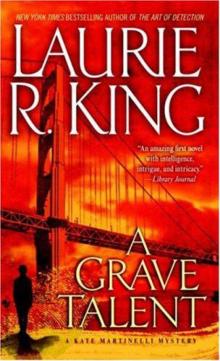 A Grave Talent km-1
A Grave Talent km-1